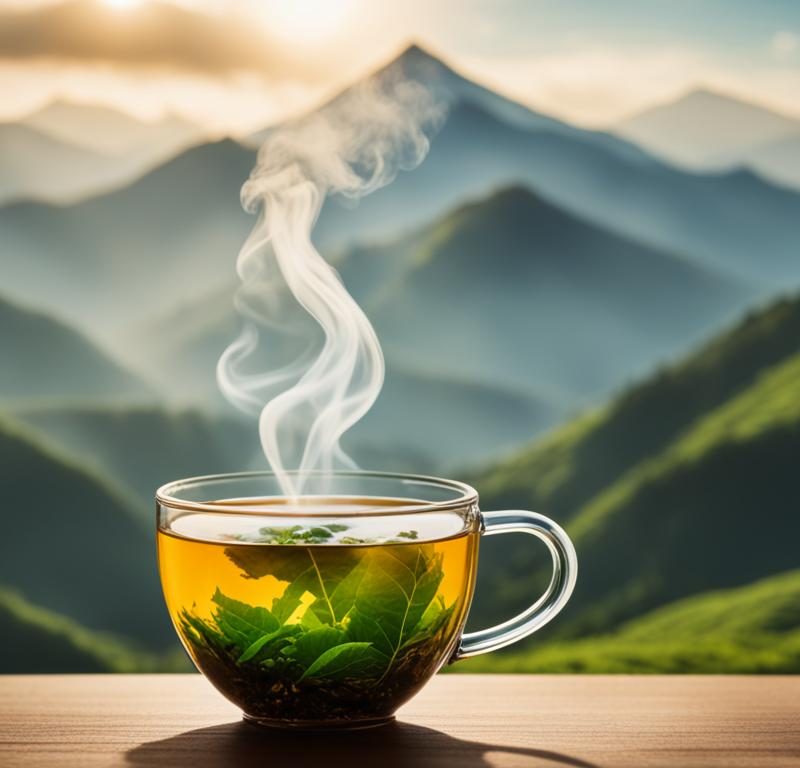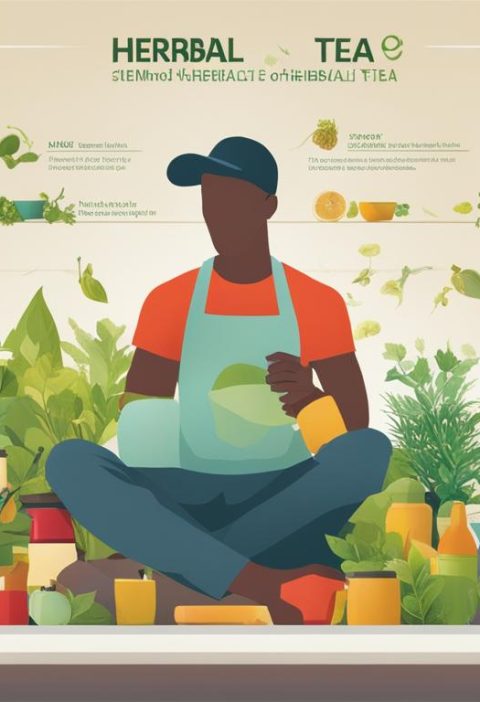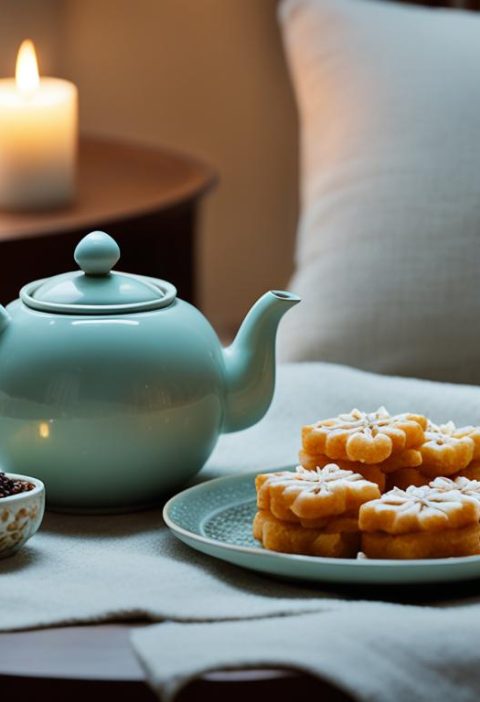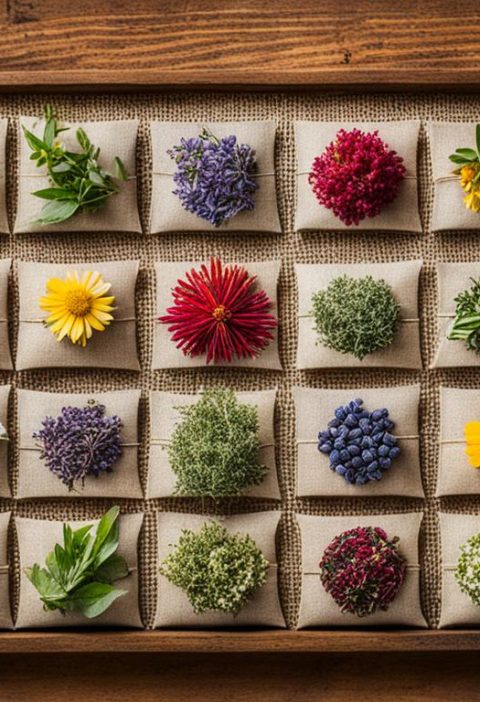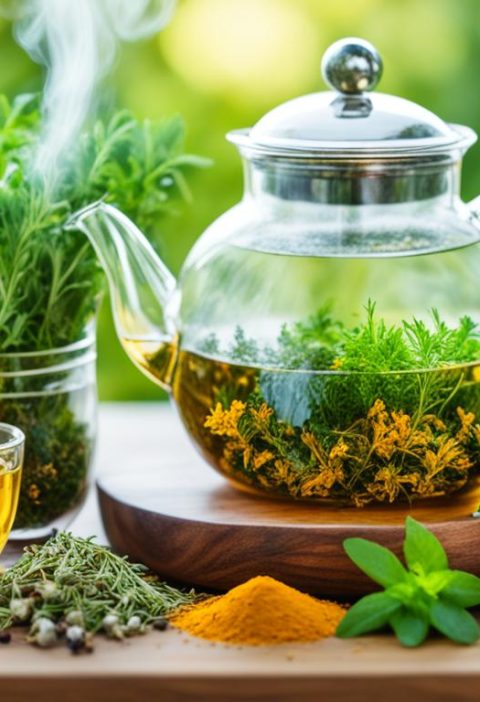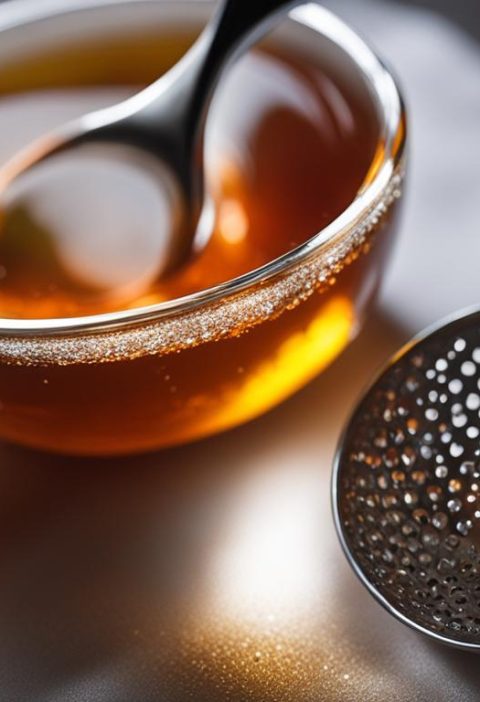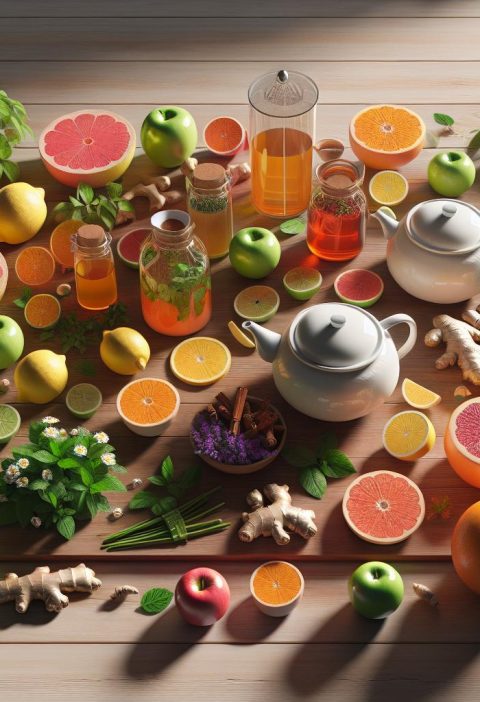Oolong tea is a traditional beverage known for its complex and diverse flavors. In this article, we will delve into the unique flavors of Chinese Oolong tea, exploring exotic varieties that promise a truly authentic tasting journey. We will also uncover the origins of oolong tea, the artistry of oolong tea processing, the flavors of oolong tea, and the benefits of oolong tea.
The Best Oolong Tea Varieties
The first best oolong tea variety is Tie Guan Yin, known for its delicate floral aroma and smooth, sweet taste. The second best oolong tea is Wuyi Yancha, characterized by its rich, smoky flavor. The third best oolong tea is Bai Hao, also known as Oriental Beauty, with a sweet, fruity aroma. These teas are made from high-quality leaves and offer unique and intricate flavors that captivate the senses.
Key Takeaways:
- Tie Guan Yin oolong tea is known for its delicate floral aroma and smooth, sweet taste.
- Wuyi Yancha oolong tea offers a rich, smoky flavor.
- Bai Hao, or Oriental Beauty, oolong tea has a sweet, fruity aroma.
- These high-quality teas provide unique and intricate flavors.
The Best Oolong Tea Varieties
When it comes to Chinese Oolong tea, there are a few standout varieties that are renowned for their exceptional flavors and exquisite craftsmanship. These premium Chinese Oolong teas offer a delightful sensory experience that is sure to captivate tea enthusiasts.
Tie Guan Yin
Tie Guan Yin is one of the best Oolong tea varieties, known for its delicate floral aroma and smooth, sweet taste. This tea is made from carefully selected leaves, hand-picked and expertly processed, resulting in a brew that is both fragrant and flavorful. With its long-lasting aftertaste and captivating aroma, Tie Guan Yin is a true gem among Oolong teas.
Wuyi Yancha
Wuyi Yancha, also known as Wuyi Cliff Tea, is another top-rated Oolong tea that stands out for its bold and rich flavor. Grown in the scenic Wuyi Mountains, this tea undergoes a unique roasting process that imparts a distinct smoky taste. The resulting brew is robust, with layers of complex flavors that showcase the craftsmanship and expertise of the tea masters.
Bai Hao (Oriental Beauty)
Bai Hao, commonly known as Oriental Beauty, is a premium Chinese Oolong tea that offers a sweet and fruity aroma. This tea is grown in the northern regions of Taiwan and is distinguished by its carefully hand-plucked leaves, which have been nibbled by tiny green leafhoppers. This unique interaction between the insects and the tea leaves creates a distinctive flavor profile, with notes of honey and ripe fruit.
The best Oolong tea varieties, including Tie Guan Yin, Wuyi Yancha, and Bai Hao, are crafted using only the finest tea leaves, reflecting the skill and expertise of Chinese tea artisans. Each variety has its own alluring characteristics, ensuring a memorable tea-drinking experience.
Continue reading to learn more about the fascinating origins of Oolong tea in Section 3.
The Origins of Oolong Tea
Oolong tea has a rich history that dates back to the Fujian Province of China, specifically the scenic Wuyi Mountains. This ancient tea variety first came into existence after the Ming Dynasty, and its name, “oolong,” translates to “black dragon” in Chinese. The birthplace of oolong tea, the Wuyi Mountains, is renowned for its stunning landscapes, where the tea plants thrive in the region’s mineral-rich soil and misty climate.
As oolong tea gained popularity, its cultivation expanded beyond China to Taiwan. In the 19th century, skilled tea farmers brought tea plant cuttings from the Wuyi Mountains to Taiwan’s fertile soil, where they flourished. This cross-cultural exchange enriched the world of oolong tea, introducing new flavors and refining traditional processing techniques.
The Fujian Province: Birthplace of Oolong Tea
The Fujian Province, located on the southeastern coast of China, is renowned for its tea production. It is in this picturesque region that the story of oolong tea begins. The Fujian Province spans a diverse range of landscapes, including mist-covered mountains, fertile valleys, and rocky cliffs, providing an ideal environment for growing tea. The unique combination of climate, altitude, and soil conditions in Fujian contributes to the distinct character and flavor profiles of oolong teas.
The Majestic Wuyi Mountains
Deep within the Fujian Province lies the majestic Wuyi Mountains. These rugged peaks are not just a sight to behold; they also play a crucial role in oolong tea production. The Wuyi Mountains are home to some of the most prized and sought-after oolong teas, thriving in the region’s microclimates and rocky terrains. Tea plants cultivated in the Wuyi Mountains absorb the minerals from the rocky soil, infusing the leaves with unique flavors and aromas.
Taiwan: The Island of Oolong Tea
Thanks to the ancient tea farmers who brought tea plants from the Wuyi Mountains, Taiwan has become known as the “Island of Oolong Tea.” The favorable climate and fertile soil of Taiwan provide perfect conditions for growing exceptional teas. The terroir of Taiwan imparts its own distinct characteristics to oolong teas, resulting in a wide range of flavors and aromas.
Oolong Tea Origins Infographic
| Region | Importance |
|---|---|
| Fujian Province, China | Birthplace of oolong tea |
| Wuyi Mountains | Renowned for its oolong teas |
| Taiwan | Island of oolong tea |
Diverse Oolong Varieties
Oolong tea offers a vast range of varieties, each with its own unique sensory experience. Whether you’re a seasoned oolong tea enthusiast or just beginning to explore this delightful beverage, there are exotic oolong tea varieties that await your discovery. Let’s delve into the world of oolong teas and unravel the distinctive oolong tea profiles that will captivate your taste buds.
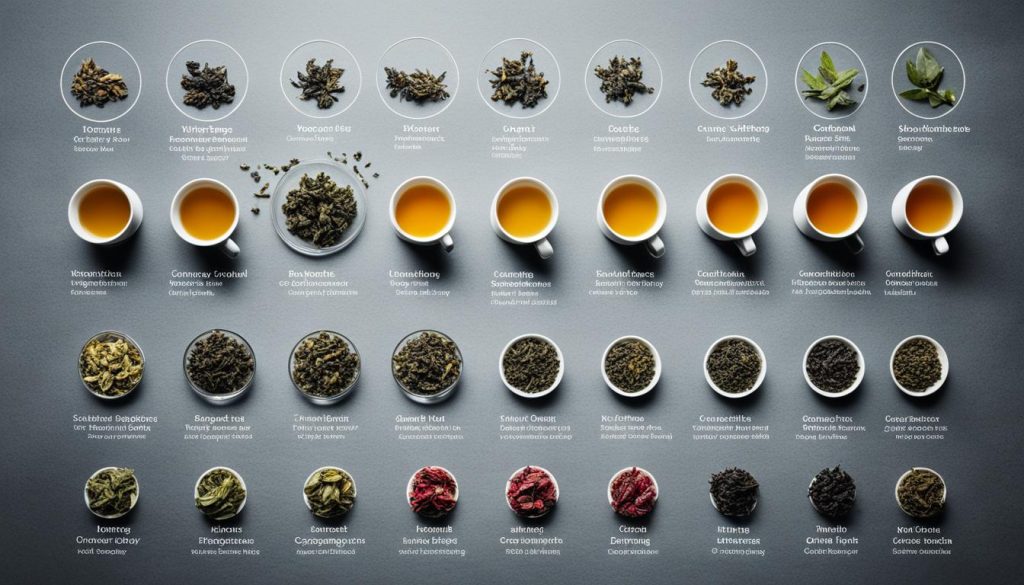
One of the most iconic Chinese oolongs is Tie Guan Yin. This premium tea is renowned for its exquisite floral aroma and smooth, sweet taste. With its delicate flavors, Tie Guan Yin offers a truly enchanting experience.
Another exceptional oolong tea is Da Hong Pao, also known as “Big Red Robe.” This rare oolong tea blend hails from the Wuyi Mountains of China and offers a bold and robust flavor profile with notes of roasted nuts and caramel.
Taiwanese oolongs also boast their own distinct flavor profiles. Dong Ding is a renowned Taiwanese oolong that exudes a rich and creamy texture, coupled with a beautiful orchid aroma. Oriental Beauty, also known as Bai Hao, delights the senses with its honeyed sweetness and fruity undertones.
But the world of oolong tea doesn’t stop there. Other regions, such as Vietnam and Thailand, have also embraced oolong production, offering their own rare oolong tea blends that showcase unique flavors. The exploration of oolong tea varieties knows no bounds, and each cup promises an exceptional experience.
| Tea Variety | Flavor Profile |
|---|---|
| Tie Guan Yin | Delicate floral aroma and smooth, sweet taste |
| Da Hong Pao | Bold and robust with notes of roasted nuts and caramel |
| Dong Ding | Rich and creamy texture, orchid aroma |
| Oriental Beauty (Bai Hao) | Honeyed sweetness, fruity undertones |
These are just a few examples of the diverse oolong tea varieties that await your exploration. Whether you prefer Chinese oolongs or Taiwanese oolongs, there is a world of distinctive flavors to uncover. So go ahead, embark on a journey of rare oolong tea blends and indulge in the elegance and complexity that oolong teas have to offer.
The Art of Oolong Tea Processing
Oolong tea is renowned for its unique flavors and characteristics, which are achieved through a meticulous processing method. Let’s explore the various stages involved in the creation of exquisite oolong tea.
1. Withering: Removing Excess Moisture
After harvest, oolong tea leaves undergo a process called withering. This stage involves exposing the leaves to controlled air and moisture levels, allowing them to slightly wilt and reduce their water content. Withering helps eliminate excess moisture and prepares the leaves for the subsequent steps.
2. Gradual Oxidation: Developing Flavor Compounds
Oolong tea falls between green and black teas on the oxidation spectrum. The degree of oxidation for oolong teas can vary, resulting in different flavor profiles. Once the leaves are withered, they are carefully bruised or rolled to initiate oxidation. This process triggers enzymatic reactions within the leaves, allowing the development of unique flavor compounds.
3. Shaping and Rolling: Crafting Distinct Appearances
The shaping and rolling of oolong leaves is a critical step in defining their appearance and enhancing their aromatic qualities. Different oolong tea types require specific shaping methods. For example, some teas are tightly rolled into small balls or pellets, while others are twisted or curled into distinctive shapes. This attention to detail contributes to the overall experience of enjoying oolong tea.
4. Charcoal Roasting: Adding Complexity to Flavor Profiles
Certain oolong tea varieties undergo an additional step known as charcoal roasting. This process involves exposing the tea leaves to controlled heat from charcoal fires. The charcoal imparts a smoky aroma and adds complexity to the flavor profile of the tea. Charcoal roasting is a traditional technique valued for its ability to enhance and balance the taste of oolong tea.
Through the careful combination of withering, oxidation, shaping and rolling, and optional charcoal roasting, oolong tea masters achieve the captivating flavors and captivating appearances that make oolong tea a remarkable beverage.
Now that we’ve explored the artistry behind oolong tea processing, let’s move on to the next section to unveil the diverse and enchanting flavors that oolong tea offers.
Unveiling the Flavors of Oolong Tea
The broad range of oxidation levels in oolong tea gives rise to a captivating tapestry of flavors. Lightly oxidized oolongs offer refreshing and grassy qualities, while Anxi and Taiwanese oolongs have aromatic and floral characteristics. Wuyi oolongs captivate with dark, toasty flavors and distinctive mineral notes. Phoenix oolongs mimic a plethora of flavors, from luscious fruits to delectable nuts and specific floral varieties, offering an unparalleled tasting adventure.
Each variety of oolong tea offers a unique taste profile, making it a delightful choice for tea enthusiasts seeking diverse and enticing flavors. Let’s explore the distinct characteristics of different oolong tea varieties:
Anxi Oolong
- A delicate and floral aroma with a subtle hint of sweetness
- Slightly oxidized, preserving the fresh and vibrant flavors
- Pale golden liquor that is smooth and velvety on the palate
Taiwanese Oolong
- Pronounced floral and fruity aromas, ranging from orchid to honey
- Light to medium oxidation, capturing the essence of the tea leaves
- Golden liquor with a complex flavor profile and a lingering finish
Wuyi Oolong
- Dark and roasted flavors similar to coffee and chocolate
- Moderate to high oxidation, resulting in robust and bold taste
- Amber-hued liquor with a rich mouthfeel and unique minerality
Phoenix Oolong
- Wide range of flavors, with each variety resembling different fruits, flowers, or nuts
- Medium to high oxidation, allowing for the full expression of the tea’s complexity
- Golden to amber liquor with a captivating aroma and a layered taste experience
Whether you prefer the delicate notes of Anxi oolongs or the robust profiles of Wuyi oolongs, there is an oolong tea flavor to satisfy every palate. Let your senses embark on a tantalizing journey as you explore the captivating flavors and aromas of oolong tea.
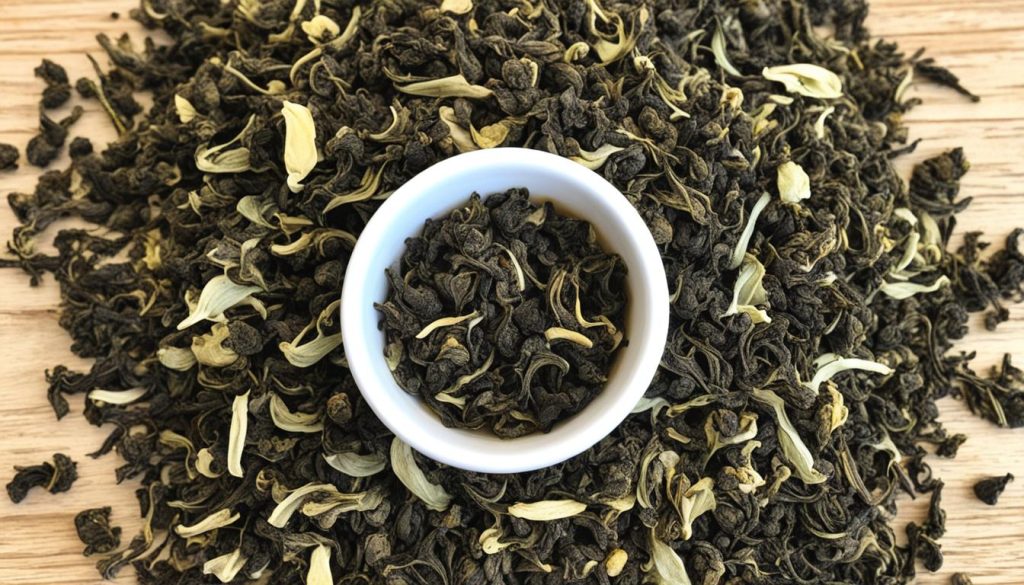
Health Benefits of Oolong Tea
Oolong tea offers a range of health benefits that contribute to overall well-being. By incorporating this authentic Chinese tea into your daily routine, you can experience the positive effects it has on your body and mind.
Boosts the Immune System: Oolong tea contains antioxidants that help strengthen the immune system, protecting the body against harmful free radicals and reducing the risk of illness.
Reduces the Risk of Certain Diseases: Studies suggest that regular consumption of oolong tea may help reduce the risk of chronic diseases such as heart disease, cancer, and diabetes, thanks to its high antioxidant content.
Improves Heart Health: Oolong tea promotes cardiovascular health by lowering bad cholesterol levels and reducing the risk of heart disease. Its natural compounds support healthy blood pressure and reduce the risk of stroke.
Enhances Cognitive Function: The unique combination of caffeine and L-theanine in oolong tea can enhance cognitive function, improving focus, alertness, and mental performance.
Promotes Digestive Tract Health: Oolong tea has traditionally been used to support digestive health. It aids in digestion, reduces bloating, and may alleviate gastrointestinal disorders.
Reduces Inflammation: Oolong tea contains polyphenols that have anti-inflammatory properties. Regular consumption may help reduce chronic inflammation in the body, which is linked to various health issues.
Authentic Chinese oolong teas, being of high quality and carefully crafted, offer superior health benefits. Their therapeutic properties make them an excellent choice for those seeking a natural and beneficial beverage.
A Comparison of Antioxidant Levels in Different Tea Types
| Tea Type | Antioxidant levels |
|---|---|
| Green Tea | High |
| Oolong Tea | Moderate |
| Black Tea | Low |
Brewing Oolong Tea
When it comes to brewing oolong tea, different methods can yield distinct and delightful results. Whether you prefer the Western brewing approach or the traditional Gongfu method, the goal is to unlock the full flavor potential of this authentic Chinese oolong tea, creating a unique oolong tea experience.
Western Brewing:
In Western brewing, the water temperature typically ranges between 180 to 212°F (82 to 100°C). This temperature range allows for the balanced extraction of flavors from the tea leaves. Steeping times can vary from 3 to 8 minutes, depending on the desired strength and personal preference. Experimenting with different steeping times can help uncover new layers of flavor.
Gongfu Brewing:
Gongfu brewing is a traditional Chinese brewing technique that utilizes higher water temperatures and shorter steeping times. The goal is to extract the essence of the tea leaves quickly, resulting in a concentrated and nuanced flavor profile. Gongfu brewing requires precision and attention to detail, making it a true art form.
Here’s a step-by-step guide for Gongfu Brewing:
- Preheat your tea vessel by rinsing it with hot water.
- Add a generous amount of tea leaves to the vessel. The recommended tea-to-water ratio is approximately 1:20, but you can adjust it according to your preference.
- Pour hot water onto the tea leaves and immediately discard the first infusion. This step is known as the “tea rinse” and helps awaken the leaves.
- Pour hot water over the tea leaves once again and let it steep for a short duration, typically 10-30 seconds.
- Using a strainer or tea filter, pour the concentrated tea into a fairness pitcher or directly into small cups.
- Repeat the steeping process, gradually increasing the steeping time with each infusion.
- Enjoy the rich and nuanced flavors with each successive infusion.
To achieve the perfect brew, weighing the tea leaves can provide more accuracy and consistency in your brewing process. This meticulous approach ensures that every sip delivers an exceptional oolong tea experience.
Share Your Oolong Tea Journey
Now that you have explored the captivating world of oolong tea, it’s time to share your experiences. We would love to hear about your preferred oolong tea variety and the captivating flavors it unveils. Whether you have indulged in the exquisite taste of Tie Guan Yin, savored the smoky notes of Wuyi Yancha, or enjoyed the sweet aroma of Bai Hao, we encourage you to share your unique oolong tea journey with us.
Oolong tea offers an array of exotic varieties, each with its own distinctive flavor profile. From the floral and delicate to the rich and toasty, these specialty oolong teas are bound to leave a lasting impression on your taste buds. By sharing your experiences, we can celebrate the uniqueness and diversity of oolong tea together, while also discovering new and exciting options to try.
So, let us know in the comments below which exotic oolong tea varieties have delighted your senses and why they hold a special place in your tea-loving heart. Your insights will not only inspire other tea enthusiasts but also contribute to the ever-growing knowledge and appreciation of specialty oolong teas. Cheers to a never-ending journey of flavor exploration!
